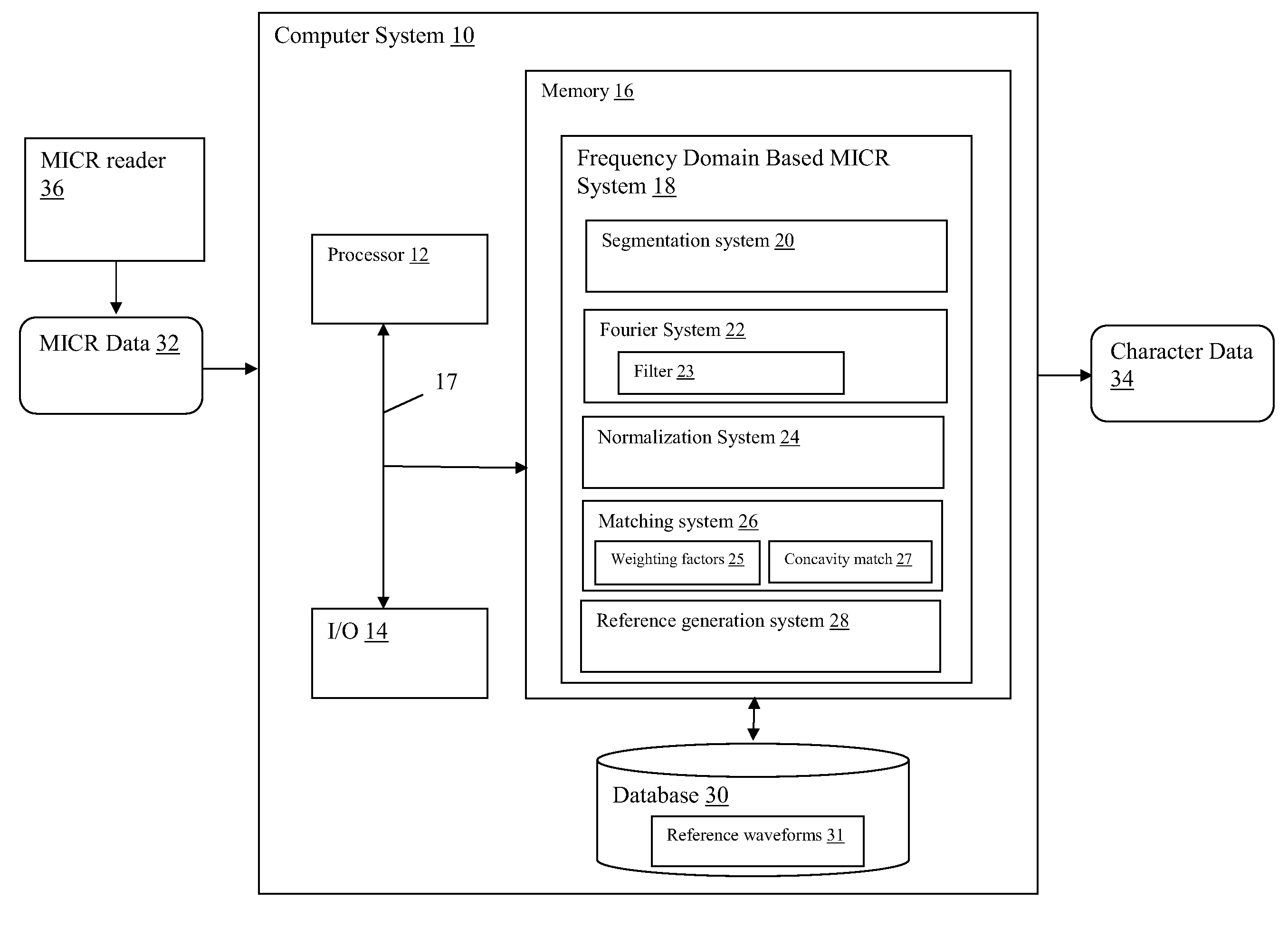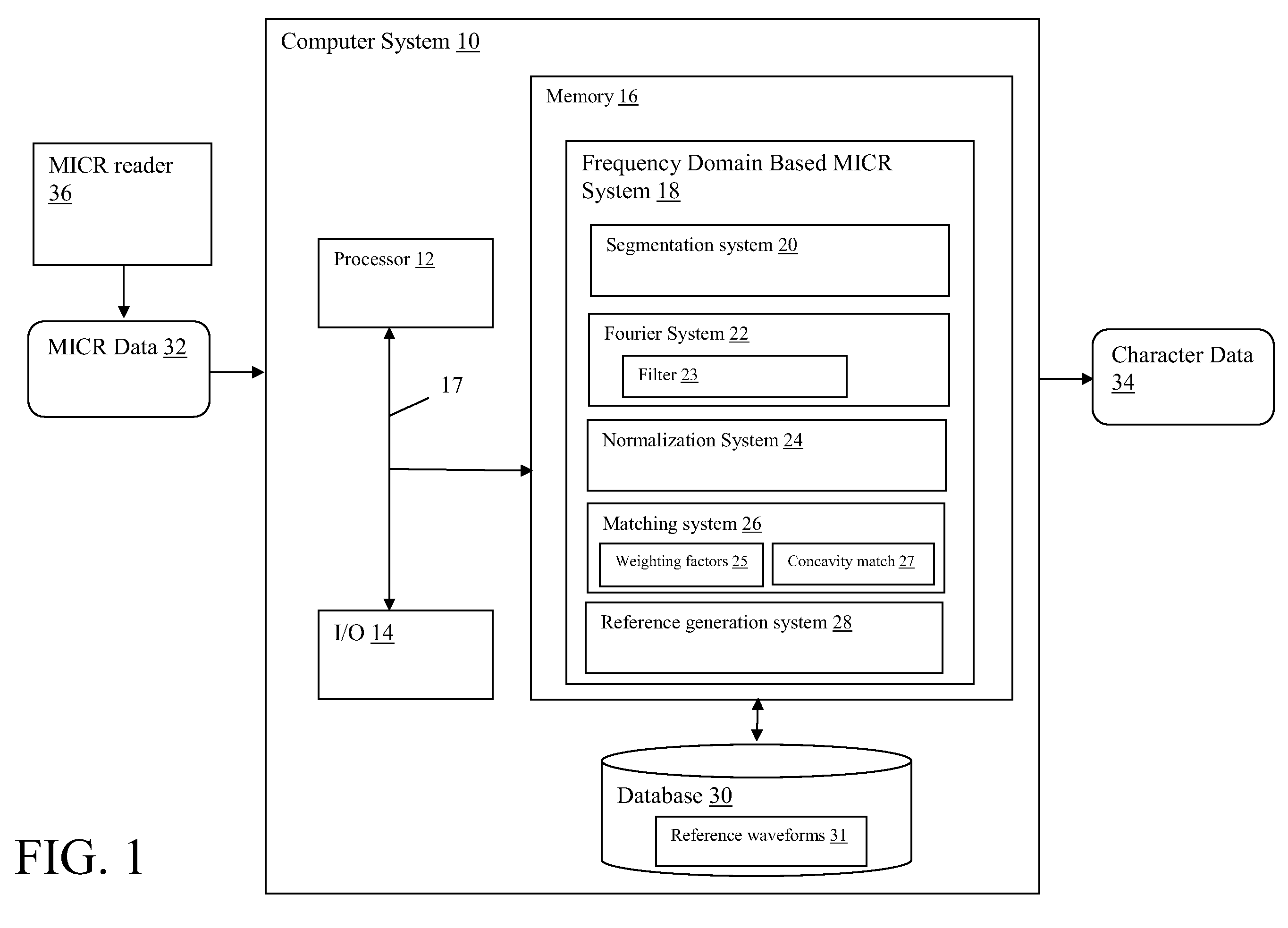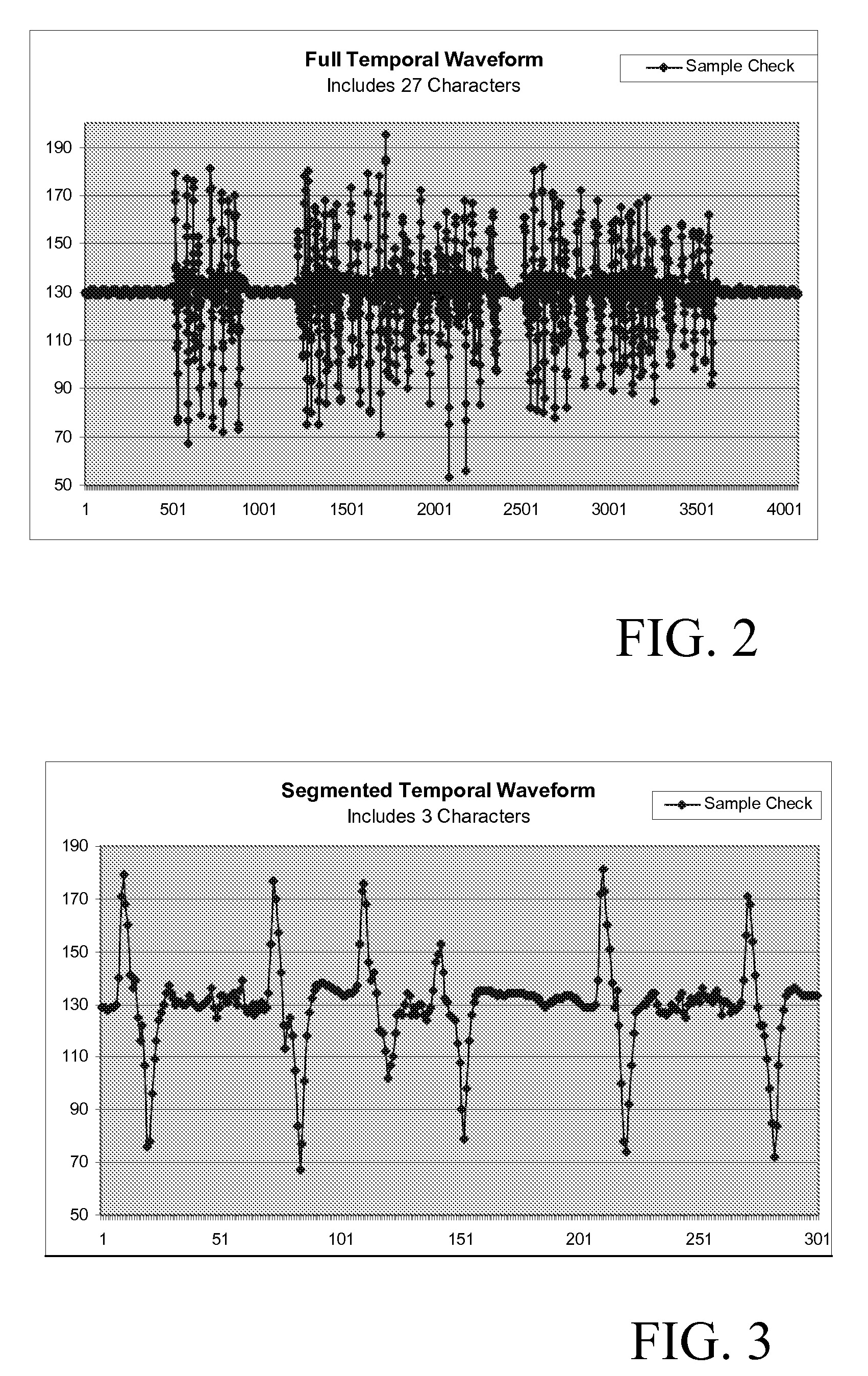Frequency domain based micr reader
- Summary
- Abstract
- Description
- Claims
- Application Information
AI Technical Summary
Benefits of technology
Problems solved by technology
Method used
Image
Examples
Embodiment Construction
[0020]Referring now to the drawings, FIG. 1 depicts a computer system 10 having a frequency domain based MICR system 18 that processes inputted MICR data 32 and generates recognized character data 34. MICR data 32 general includes temporal waveform signals obtained from a MICR reader 36 that reads characters printed with magnetic ink, such as those found on the code line of a bank check. For instance, in the case of a single gap MICR reader, magnetic data is collected as the “gap” passes over the code line. In one common, but not limiting, application, code lines are printed using 14 possible characters (0-9 and four special characters) in E13B font. FIG. 2 depicts an example of a temporal waveform obtained from a MICR reader 36 from of a sample bank check having 27 characters in the code line. FIG. 3 depicts a segmented waveform view of three of the characters from the waveform of FIG. 2.
[0021]Rather than analyze the waveform data in the temporal domain to perform character recogni...
PUM
 Login to View More
Login to View More Abstract
Description
Claims
Application Information
 Login to View More
Login to View More - R&D
- Intellectual Property
- Life Sciences
- Materials
- Tech Scout
- Unparalleled Data Quality
- Higher Quality Content
- 60% Fewer Hallucinations
Browse by: Latest US Patents, China's latest patents, Technical Efficacy Thesaurus, Application Domain, Technology Topic, Popular Technical Reports.
© 2025 PatSnap. All rights reserved.Legal|Privacy policy|Modern Slavery Act Transparency Statement|Sitemap|About US| Contact US: help@patsnap.com



